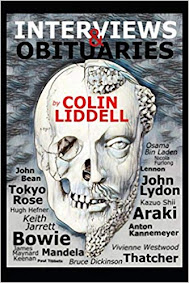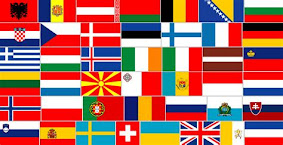 |
| Sir Joshua Reynolds, "Girl With a Dead Bird" |
by Andy Nowicki
Evil must of necessity loathe, fear, and despise innocence.
Wherever innocence endures, evil feels a compulsion to attack it mercilessly until it is destroyed.
This simple observation, more than anything else, explains the trajectory of the so-called sexual revolution of the last half-century. In all of its forms, with all of its wiles, and with the wealth and blessing of the rulers of our modern world, evil has stalked innocence wherever it is found and has sought either to sully it beyond repair or to wipe it out utterly.
Thus elementary school students are taught about the glories of anal sex, ten-year old drag queens are promoted as inspirational specimens of self-actualization—rather than being properly regarded as pitiful victims of outrageous parental abuse—and every vestige of modesty and decent living is routinely mocked and derided as an ornamentation of base hypocrisy.
I myself can lay no credible claim to innocence, as I have
repeatedly stated many times before. Like the pseudonymous Psalmist of renown,
I am a worm and no man.
No, not a mere worm, but rather a beast, a brute, an “errant
knave,” an altogether loathsome being, born into bilge and conformed to corruption.
Nevertheless, I have perhaps one redeeming quality: I am a
genuine appreciator of innocence in all of its forms, and I strive mightily to
be its protector. When innocence is rhapsodized in great literature or art, the
reader or viewer is compelled to the sort of profound insight—reverential awe mingled
liberally with a certain intimation of heartbreak—as described memorably by the
speaker in T.S. Eliot’s “Preludes”:
I am moved by fancies that are curled
Around these images, and cling
The notion of some infinitely gentle, infinitely suffering thing.
But why must that which is “infinitely gentle”—and thus by
implication, innocent—also be “infinitely suffering”? What is being depicted in
these lines would appear to be an oblique expression of the reality that, in
our world, enduring innocence must inevitably suffer—perhaps suffer even unto
death—for the sake of the debased and the corrupt.
Must that which is innocent, then, always be a lamb
willingly striding towards its slaughter? Is it simply the nature of innocence
to be self-sacrificial?
Here we are moved to consider the words of Christ regarding
the proper mindset of the innocent: “Be ye guileless as doves, but shrewd as serpents.” Somehow it is essential, when it comes to guile, both “to have and to
have not” simultaneously. It seems to be a paradox, and phrased in such a
manner, it does strike one as a self-contradictory proposition. But it may be
parsed thusly: there is the guile exercised by the unsavory seducer, the
demonic demagogue, the silver-tongued confidence man, and the like; and there
is, correspondingly, the guile exercised by the one who knows well the tricks
of their trades, the better to outwit them and evade their snares.
In fact, the paradox penetrates deeper still. For it may indeed
be asserted that the innocent one intent upon keeping his innocence must “school”
himself in such a manner by which he is able to comprehend the wiles of the
corrupt. More than this, he must know the appeal of that which is forbidden,
without succumbing to the indulgence in such desires. Only by so doing can he
be fortified against that which can diminish and finally destroy his innocence.
Again, it bears repeating that I am not, by any stretch of
the imagination, such a person. Rather, I am one who, finding himself sullied beyond
repair, casts a backwards look his former state, and pines for grace with all
of his considerable might, all the while remaining “stewed in grime,” his very
soul disfigured hideously, his countenance reflecting the hellish state of his
tortured mind and twisted heart.






























